The light works
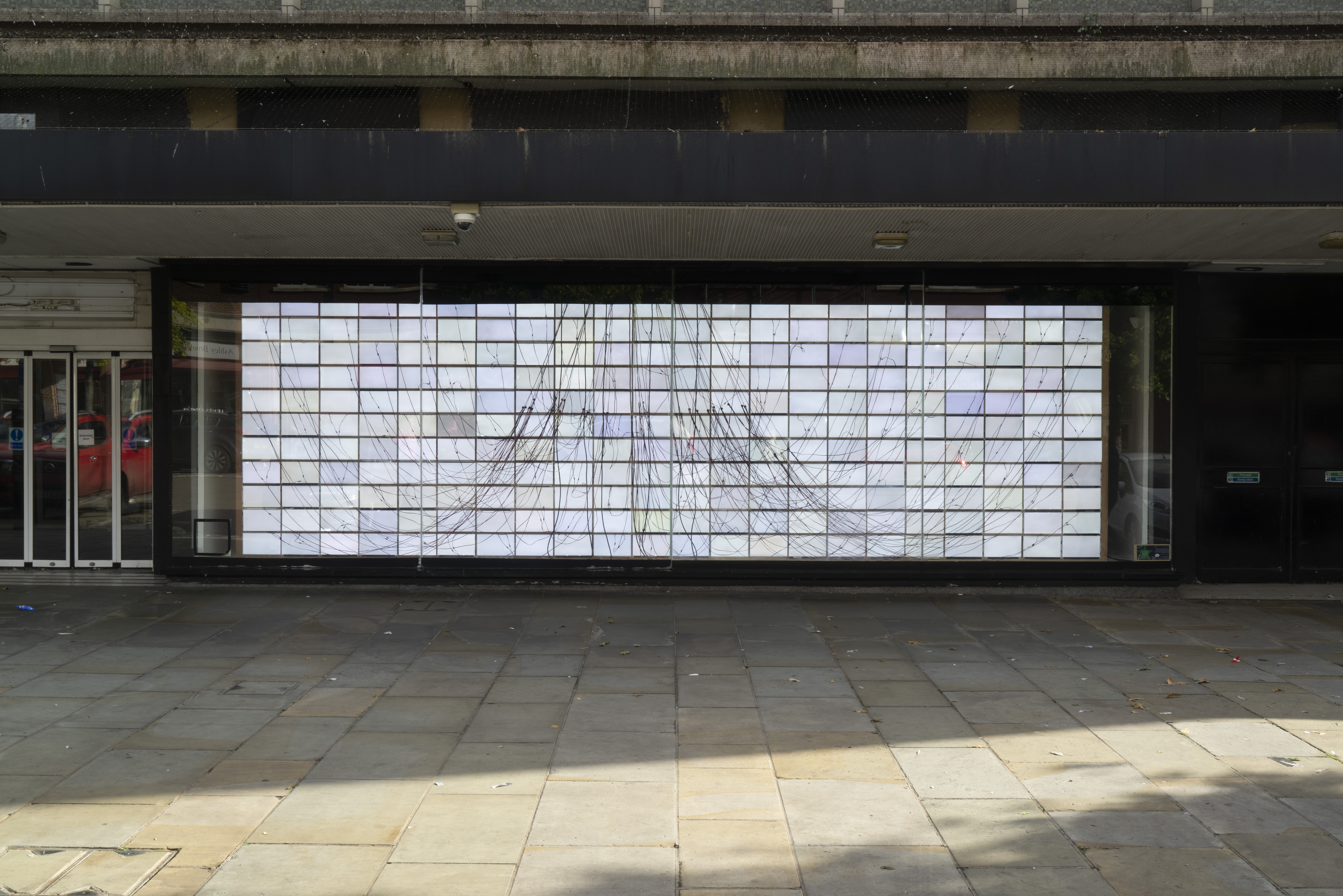
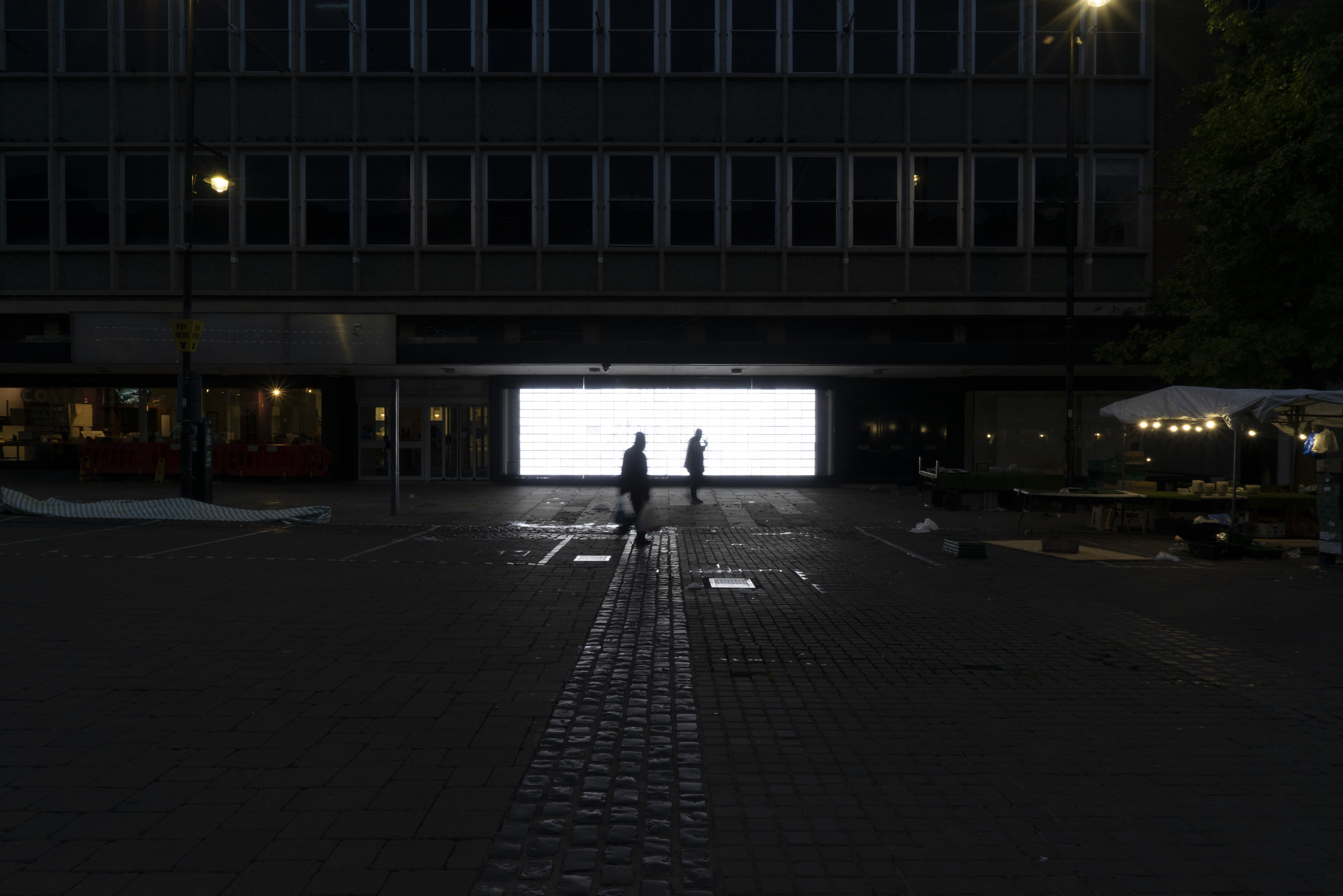
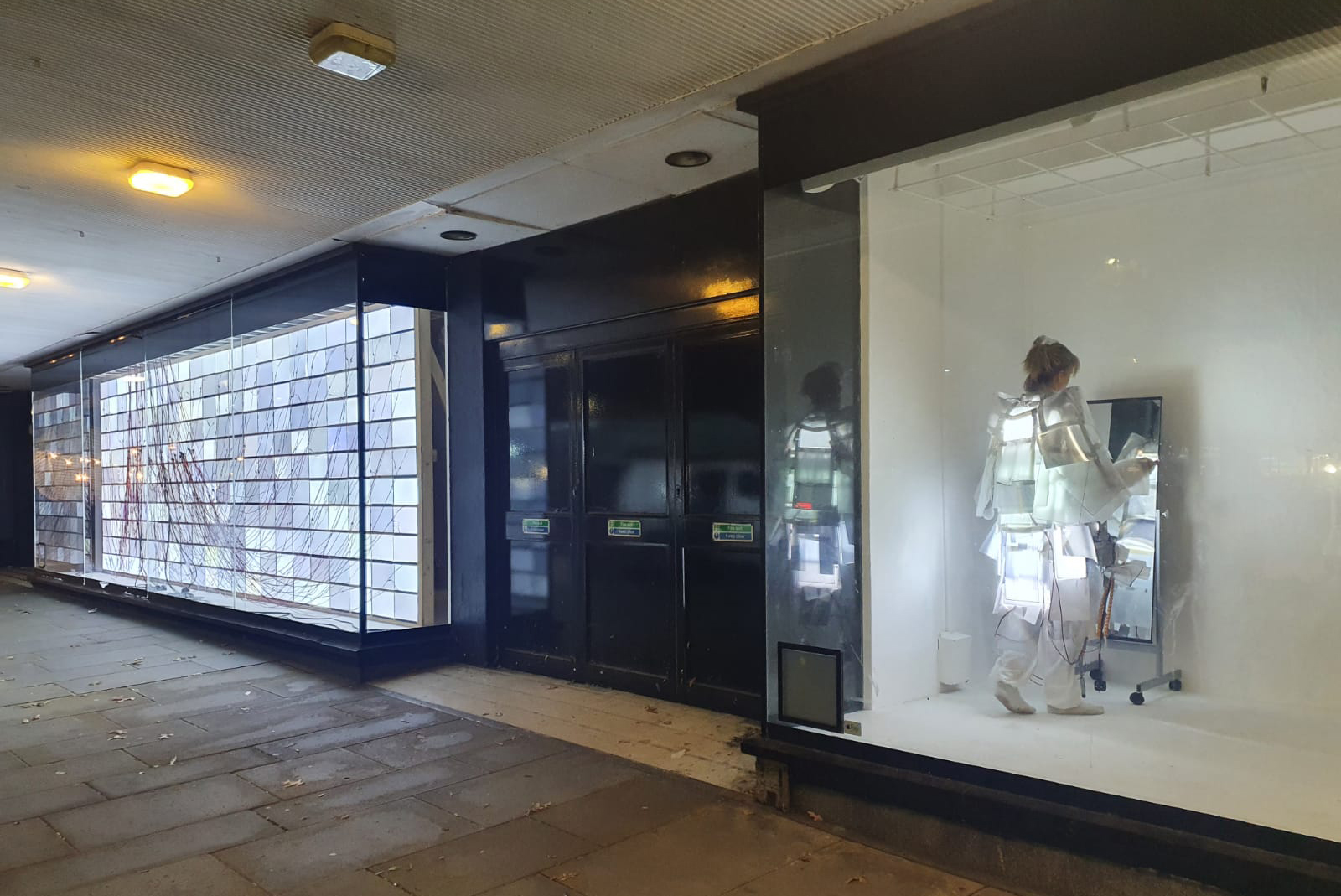




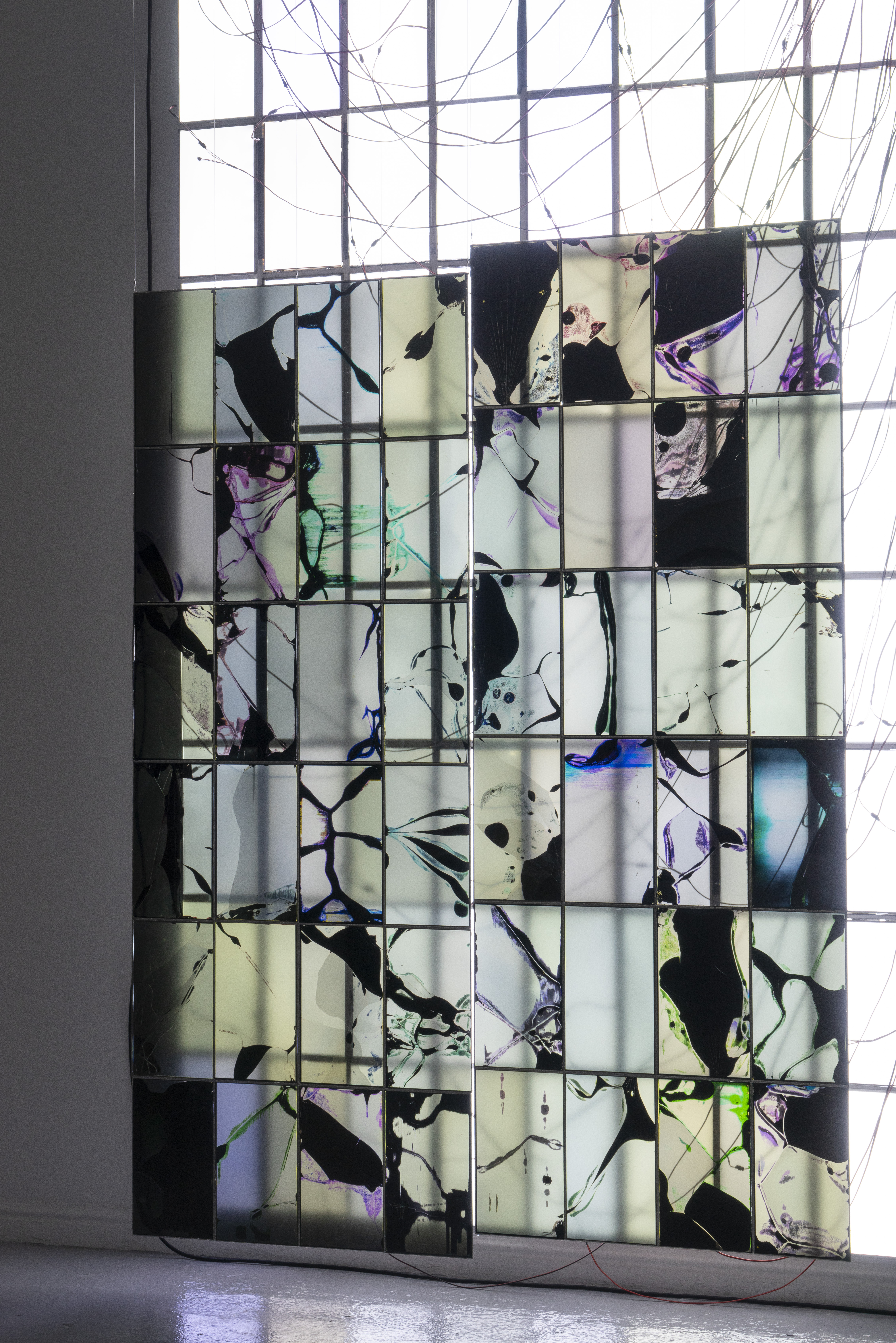
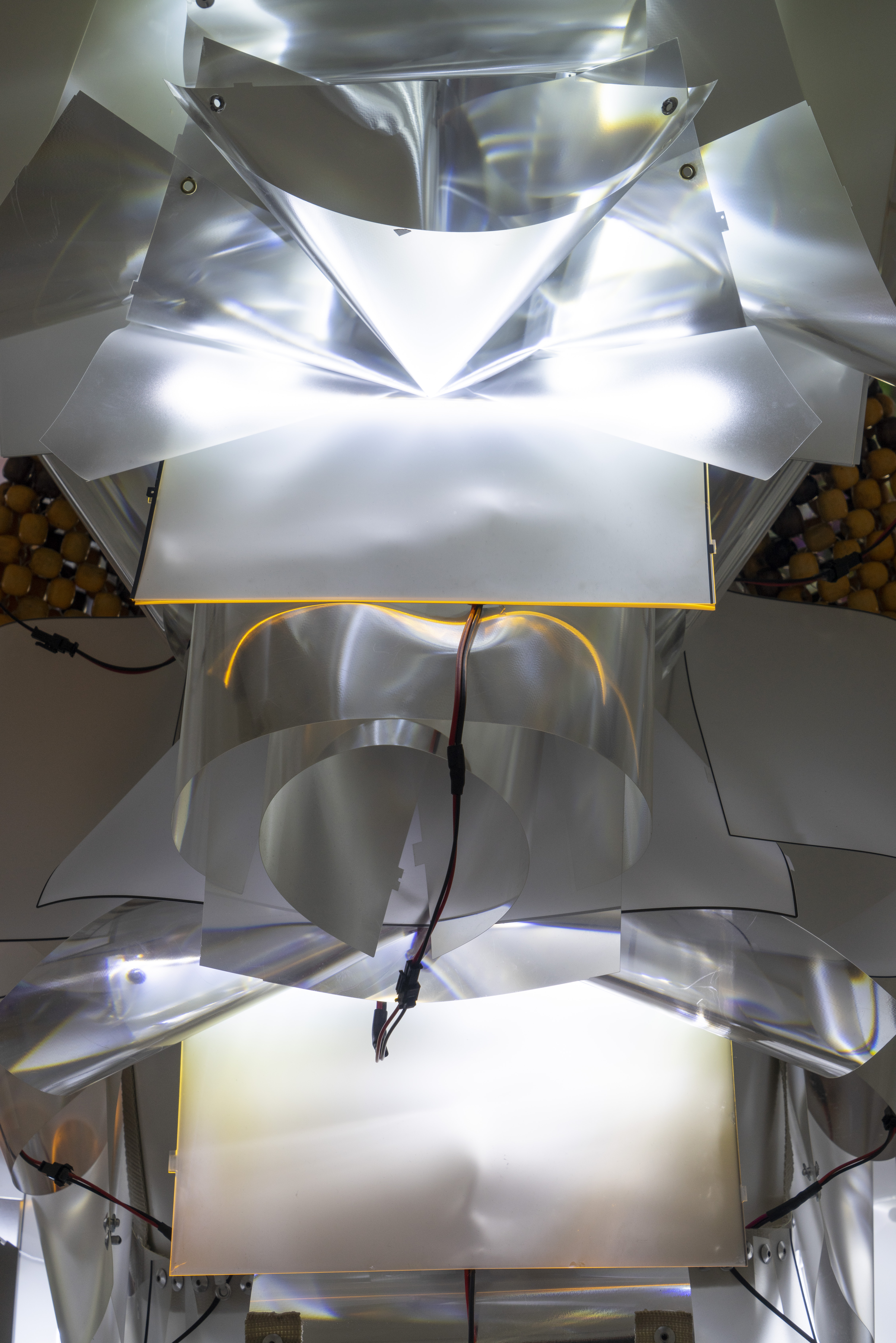
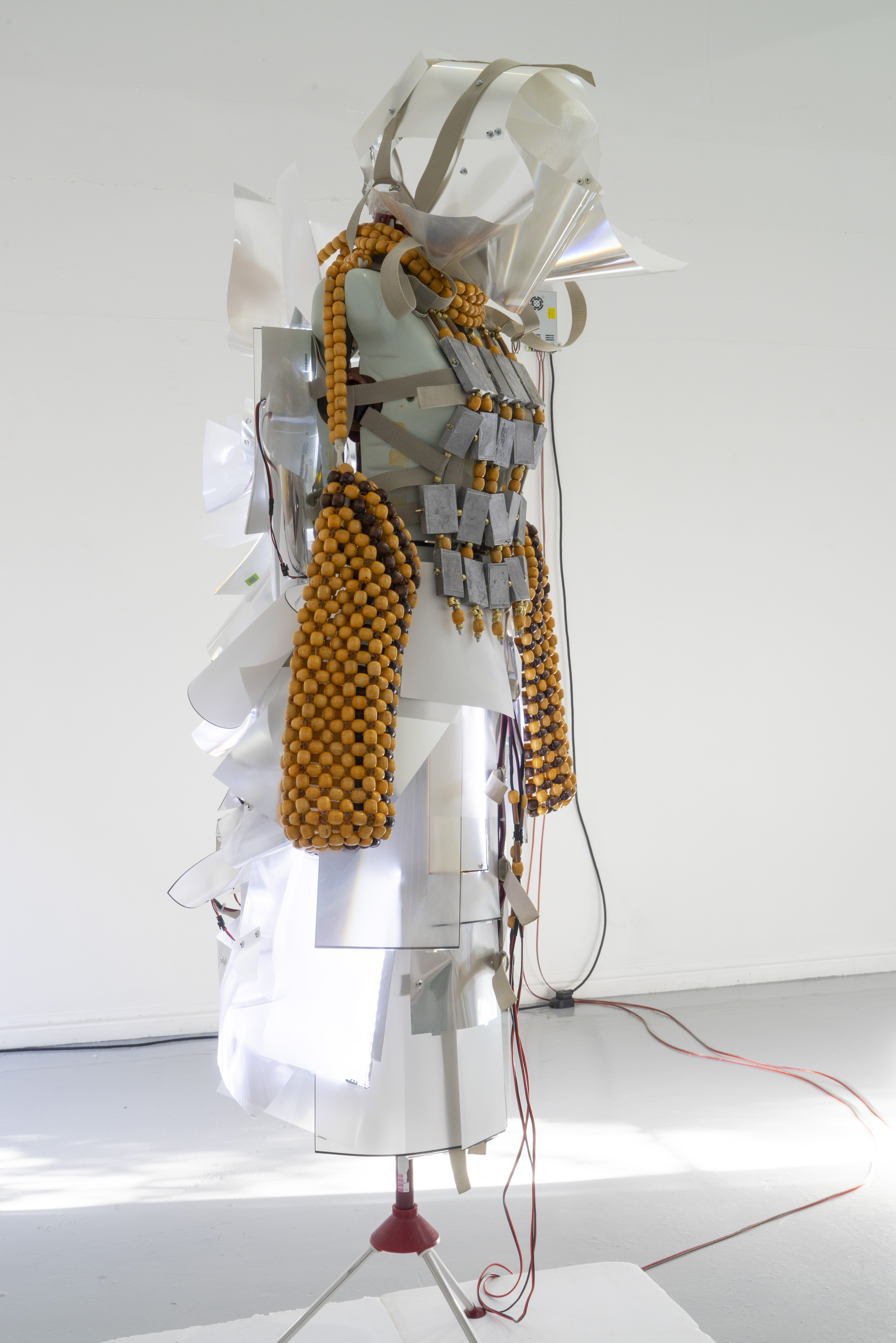
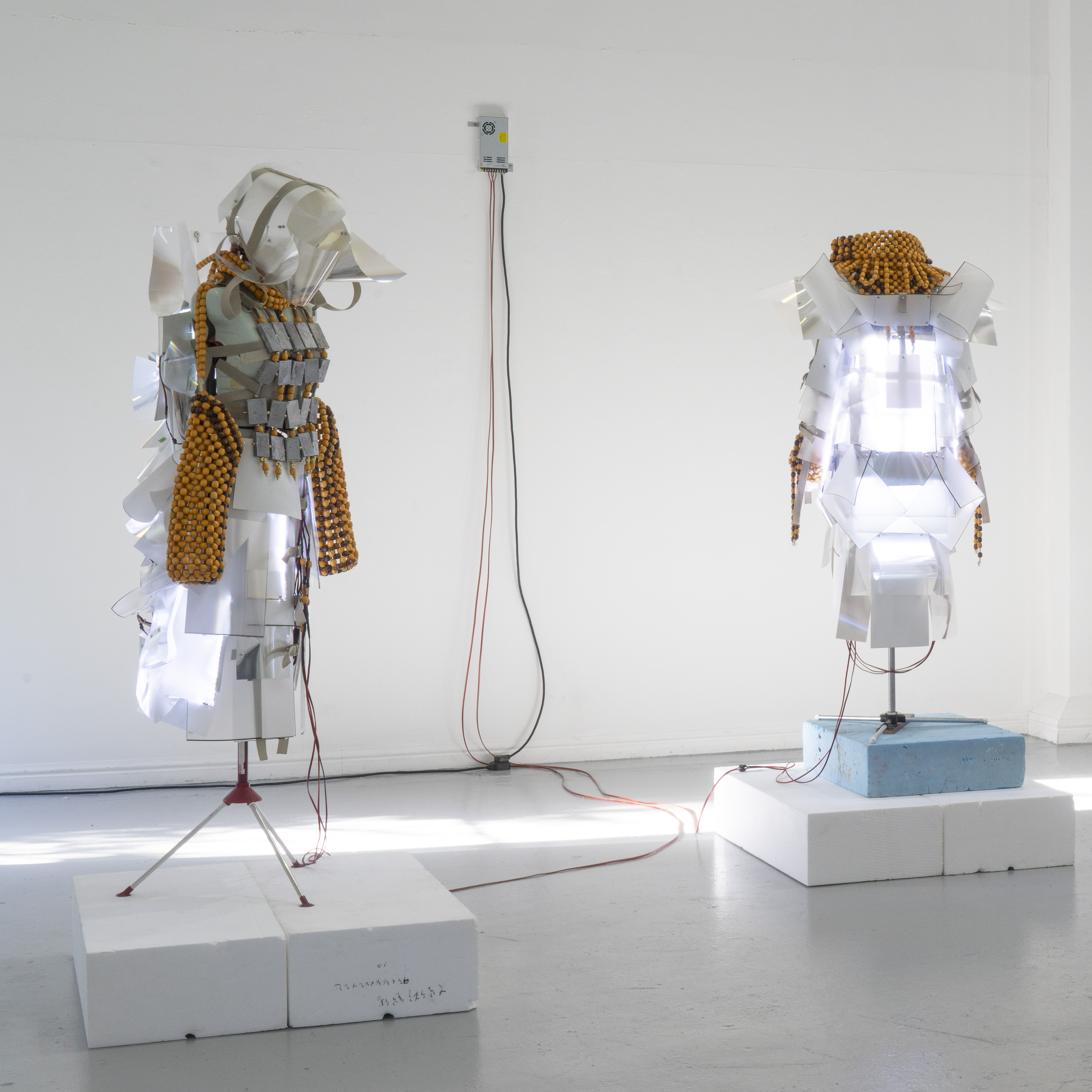



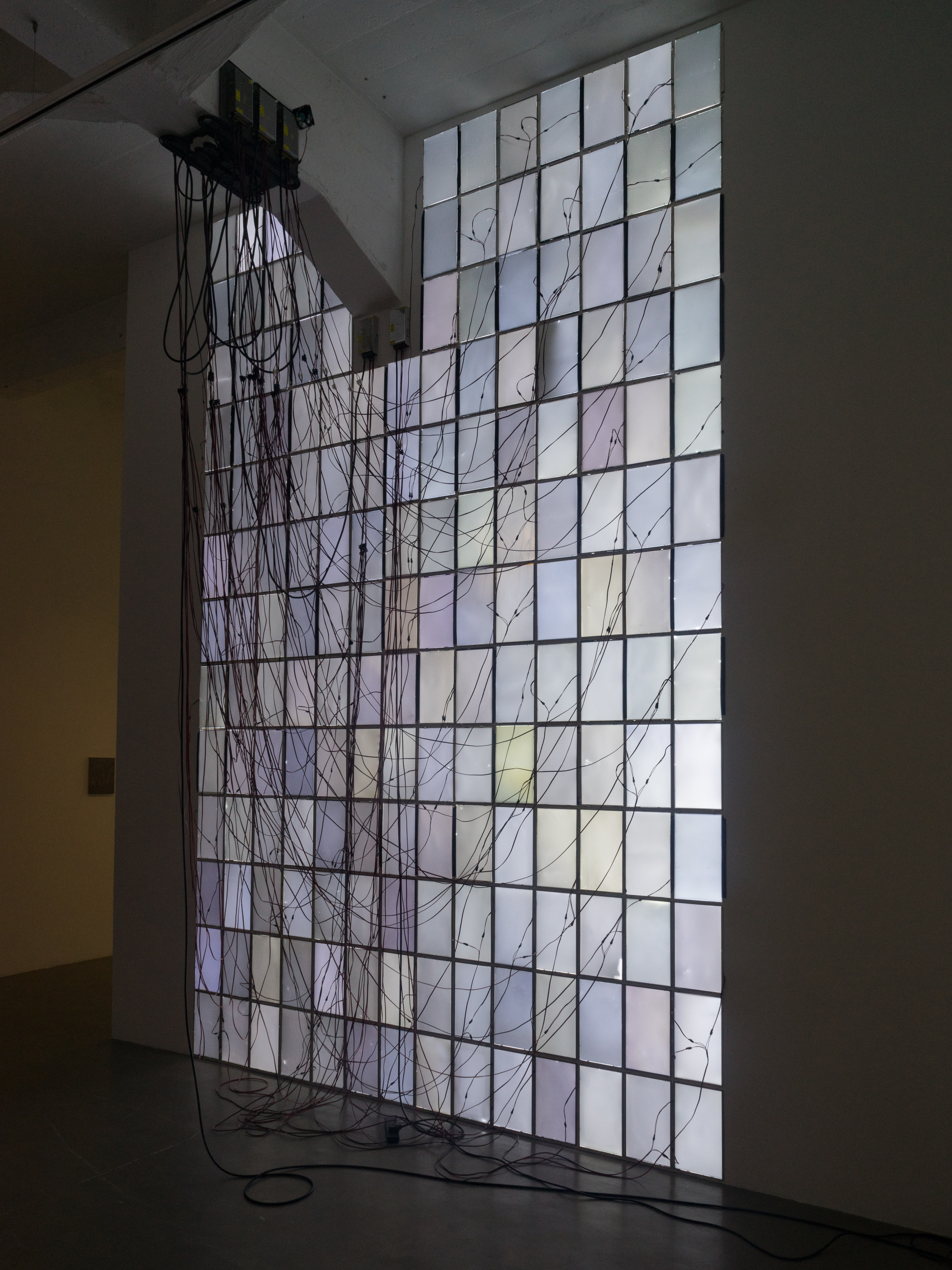



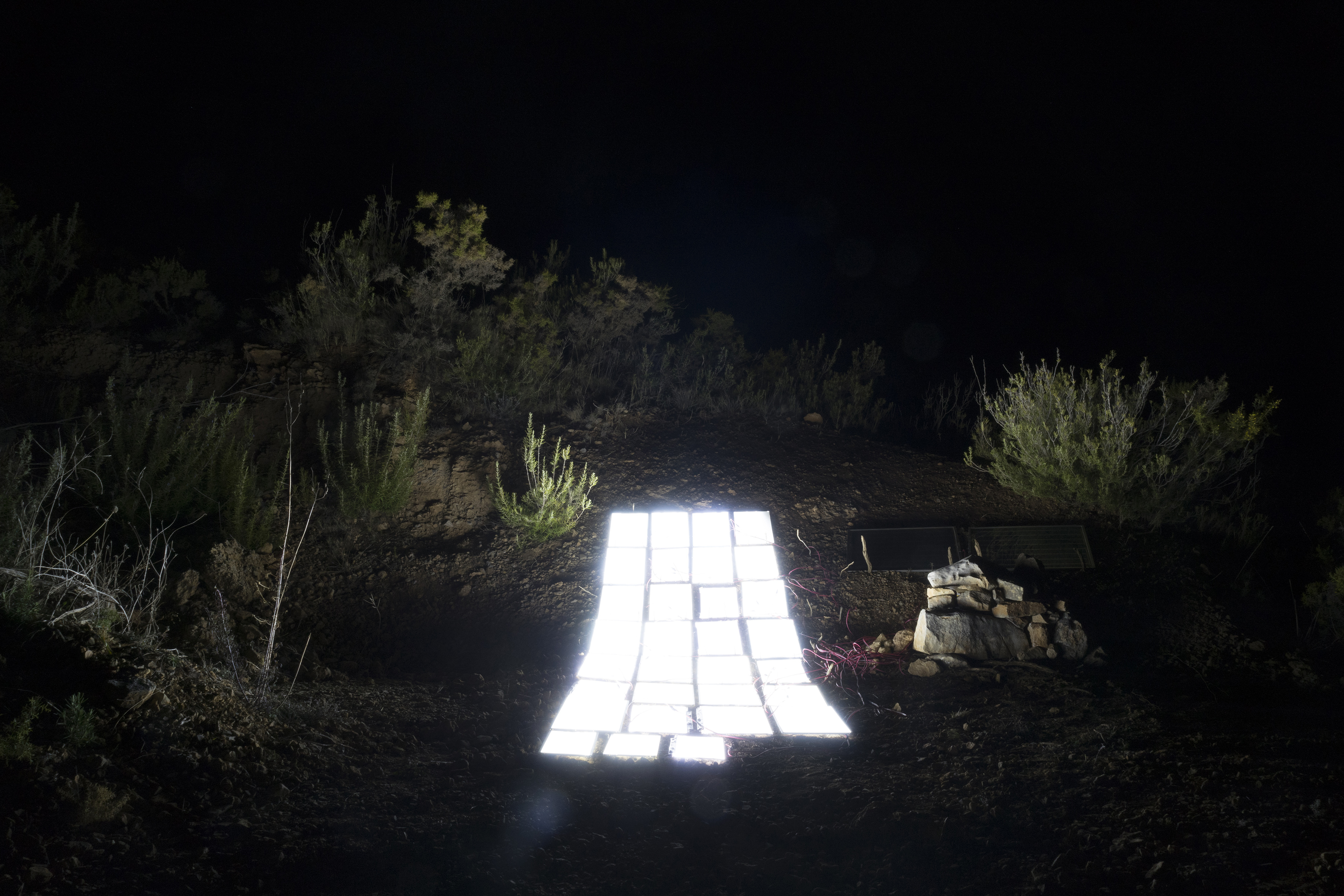
The Light Works
A text by Susan Jacobs
A wall of light emanates a gridded palette of fluctuating violet tones, like a faintly bruised curtain. The glowing structure exposes its own inner networks of wires and cables, radiating from it like the nervous system of a body, drawn out before the skin that once concealed them. Like an organism, a morphing body of cells, veins arteries and nerves, this work is its own intrinsic system whose modular nature continually adapts in response to various sites, conditions and performative contexts.
The works in this series are assembled from a mass of discarded laptop screens, whose inner back-lit panels have been carefully salvaged and re-instated to transcend the throw-away nature of their original function. Recalling advertising billboards, or HI-FI window displays, these screens are devoid of the content they usually transmit. The barrage of information has been muted, in favour of a translucent aura that bathes its viewers in subtle light.
This ever-growing body of work re-uses waste materials as well as the by-products of other actions that occur through the process of reviving the rejected screens. Their dismantling produces not only the light panels, but other elements that once showed information, which are turned into soldered structural forms that resemble stained-glass windows. Those unable to be revived are turned into armour-like garments incorporating cast re-cycled metals, and disparate found materials such as wooden beads, all of which register different frequencies, temporal scales and associations.
When installed inside architectural spaces, The Magic (2018), The Gate (2019), Twilight (Prototype) (2021), the system expands or contracts, casting a veneer of pale light over the existing interiors which host it, tinting our perception of the space and the works audience. In outdoor landscapes, such as: The Return (2018), it has harnessed the power of the sun. Its elements have been reconfigured as a suite of glowing shield-like costumes, Future’s Landing (2019), and later in Window Shopping (2021), adorning the bodies of performers who moved within the window façade of a former department store. As this body of work grows to respond to various contexts, each iteration touches on the layered thoughts that inform it - the consumption of dwindling earthly resources, waste culture, and cycles of life.
Waste is intrinsically embedded in capitalist society, however extracted from sight, deported and pushed largely out of mind. A convenient distance might appear to relegate trash outside the realm of economics, but that ‘elsewhere’ is always ‘somewhere’. A cognitive dissonance sets in. We know the existence of these landfills, scrap yards, and carbon-heavy journeys of waste, yet we continue to contribute to the problem. We witness the damage inflicted onto the environment, through the very technologies that contribute to its demise.
As each waste fragment is attended to, an accrual of values is morphed into new objects, drawing their original use value back into question. They become vessels for the temporal, economic and ecological considerations that shape them. An ecosystem of making evolves, which observes and embraces these shifts from timely or temporary value, and how this might transition to becoming lasting value in artwork. An shift in value takes place, from the capitalist to the humane: reconsidering what human imagination and labour are ‘worth’ might help lend increased value to future materials made from waste, as well as to the environment that affords us a place in which to utilise them.
The un-doing of discarded screens yields a topography of several thin layers with particular optical qualities that distort, diffuse, magnify and mis-align. When dressed in these fragments of illuminated film, sections of the performers bodies appear to dissolve as they move. Their faceted silhouettes and self-involved gestures allude to futuristic visions associated with works of fiction, yet still with a keen eye on signifiers of contemporary consumer behaviour. The making of these glowing garments embodies a close examination of the materials of technology that we commonly gaze through, but not directly at. The nature of such an adornment speaks to the mineral makeup of electronic waste, as much as to the same minerals drawn from the earth for application in the cosmetics industry, creating more bodily veneers within reality.
Bringing the detritus of capitalism back into circulation acts as a literal and metaphorical form of re-wiring of a system. In this way, the process of the work serves to slow down and reconsider how classifications of value, inbuilt obsolescence and the consumption of fast-fashion might be subverted. As the performers movements animate the light garments, they take on a sense of weightlessness akin to an otherworldly state. Marginalised materials commonly sequestered away, are swept into the spectacle of centre stage as covetable quantities. Waste is re-imagined and elevated to transcend itself - its material affordances are recognised as means to cast new light on the social spaces activated by the work.
The investment of care in reviving these materials becomes a means to chaperone them to a more sustainable afterlife, like an alchemical process - from life to death and back - which echoes a spiritual transition. The screen components become like reliquaries, chronicling the radical shifts in value that objects and materials can embody through transformation.
A text by Susan Jacobs
A wall of light emanates a gridded palette of fluctuating violet tones, like a faintly bruised curtain. The glowing structure exposes its own inner networks of wires and cables, radiating from it like the nervous system of a body, drawn out before the skin that once concealed them. Like an organism, a morphing body of cells, veins arteries and nerves, this work is its own intrinsic system whose modular nature continually adapts in response to various sites, conditions and performative contexts.
The works in this series are assembled from a mass of discarded laptop screens, whose inner back-lit panels have been carefully salvaged and re-instated to transcend the throw-away nature of their original function. Recalling advertising billboards, or HI-FI window displays, these screens are devoid of the content they usually transmit. The barrage of information has been muted, in favour of a translucent aura that bathes its viewers in subtle light.
This ever-growing body of work re-uses waste materials as well as the by-products of other actions that occur through the process of reviving the rejected screens. Their dismantling produces not only the light panels, but other elements that once showed information, which are turned into soldered structural forms that resemble stained-glass windows. Those unable to be revived are turned into armour-like garments incorporating cast re-cycled metals, and disparate found materials such as wooden beads, all of which register different frequencies, temporal scales and associations.
When installed inside architectural spaces, The Magic (2018), The Gate (2019), Twilight (Prototype) (2021), the system expands or contracts, casting a veneer of pale light over the existing interiors which host it, tinting our perception of the space and the works audience. In outdoor landscapes, such as: The Return (2018), it has harnessed the power of the sun. Its elements have been reconfigured as a suite of glowing shield-like costumes, Future’s Landing (2019), and later in Window Shopping (2021), adorning the bodies of performers who moved within the window façade of a former department store. As this body of work grows to respond to various contexts, each iteration touches on the layered thoughts that inform it - the consumption of dwindling earthly resources, waste culture, and cycles of life.
Waste is intrinsically embedded in capitalist society, however extracted from sight, deported and pushed largely out of mind. A convenient distance might appear to relegate trash outside the realm of economics, but that ‘elsewhere’ is always ‘somewhere’. A cognitive dissonance sets in. We know the existence of these landfills, scrap yards, and carbon-heavy journeys of waste, yet we continue to contribute to the problem. We witness the damage inflicted onto the environment, through the very technologies that contribute to its demise.
As each waste fragment is attended to, an accrual of values is morphed into new objects, drawing their original use value back into question. They become vessels for the temporal, economic and ecological considerations that shape them. An ecosystem of making evolves, which observes and embraces these shifts from timely or temporary value, and how this might transition to becoming lasting value in artwork. An shift in value takes place, from the capitalist to the humane: reconsidering what human imagination and labour are ‘worth’ might help lend increased value to future materials made from waste, as well as to the environment that affords us a place in which to utilise them.
The un-doing of discarded screens yields a topography of several thin layers with particular optical qualities that distort, diffuse, magnify and mis-align. When dressed in these fragments of illuminated film, sections of the performers bodies appear to dissolve as they move. Their faceted silhouettes and self-involved gestures allude to futuristic visions associated with works of fiction, yet still with a keen eye on signifiers of contemporary consumer behaviour. The making of these glowing garments embodies a close examination of the materials of technology that we commonly gaze through, but not directly at. The nature of such an adornment speaks to the mineral makeup of electronic waste, as much as to the same minerals drawn from the earth for application in the cosmetics industry, creating more bodily veneers within reality.
Bringing the detritus of capitalism back into circulation acts as a literal and metaphorical form of re-wiring of a system. In this way, the process of the work serves to slow down and reconsider how classifications of value, inbuilt obsolescence and the consumption of fast-fashion might be subverted. As the performers movements animate the light garments, they take on a sense of weightlessness akin to an otherworldly state. Marginalised materials commonly sequestered away, are swept into the spectacle of centre stage as covetable quantities. Waste is re-imagined and elevated to transcend itself - its material affordances are recognised as means to cast new light on the social spaces activated by the work.
The investment of care in reviving these materials becomes a means to chaperone them to a more sustainable afterlife, like an alchemical process - from life to death and back - which echoes a spiritual transition. The screen components become like reliquaries, chronicling the radical shifts in value that objects and materials can embody through transformation.
Light works — 2018 onwards.